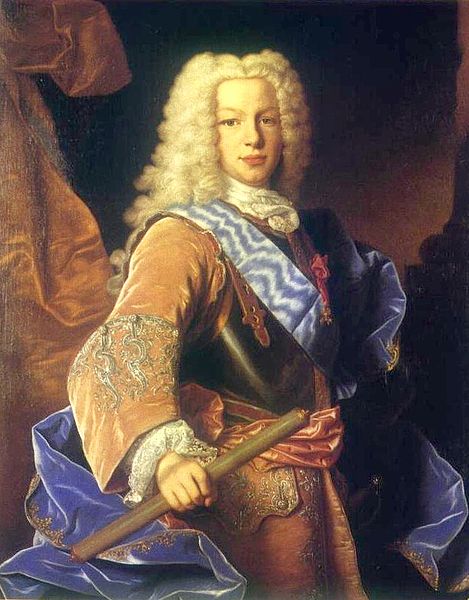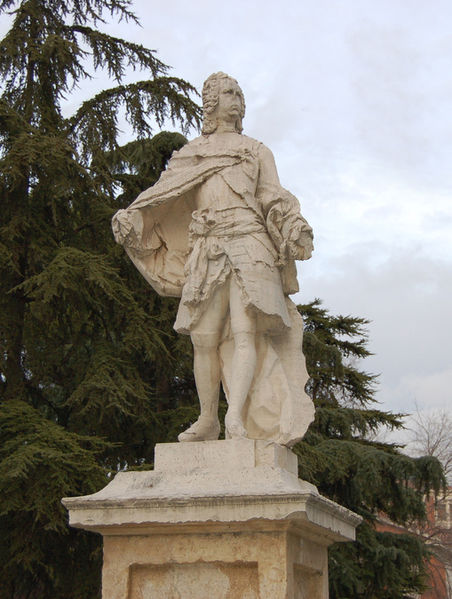<Back to Index>
- Physicist Armand Hippolyte Louis Fizeau, 1819
- Writer Jaroslav Seifert, 1901
- King of Spain Ferdinand VI, 1713
PAGE SPONSOR



Ferdinand VI (Spanish: Fernando VI; 23 September 1713 – 10 August 1759), called the Learnt, was King of Spain from 9 July 1746 until his death. He was the fourth son of the previous monarch Philip V and his first wife Maria Luisa of Savoy. Ferdinand, the third member of the Spanish Bourbon dynasty, was born in Madrid on 23 September 1713.
Born at the Royal Alcazar of Madrid, his youth was depressed. His father's second wife, Elisabeth of Parma, was a domineering woman, who had no affection except for her own children, and who looked upon her stepson as an obstacle to their fortunes. The hypochondria of his father left Elisabeth mistress of the palace. Ferdinand was by temperament melancholy, shy and distrustful of his own abilities. When complimented on his shooting, he replied, "It would be hard if there were not something I could do."
In his life he was orderly and retiring, averse from taking decisions, though not incapable of acting firmly, as when he cut short the dangerous intrigues of his able minister Zenón de Somodevilla y Bengoechea, Marquis of Ensenada, by dismissing and imprisoning him. He was called Ferdinand the Learned for his refined pursuits.
Shooting and music were his only pleasures, and he was the generous patron of the famous singer Farinelli, whose voice soothed his melancholy.
Ferdinand was married in 1729 to Infanta Barbara of Portugal, daughter of John V of Portugal and Mary Anne of Austria.
The very homely looks of his wife were thought by observers to cause
the prince a visible shock when he was first presented to her. Yet he
became deeply attached to his wife, and proved in fact nearly as
uxorious as his father. When he came to the throne, Spain found itself in the War of the Austrian Succession which ended without any benefit to Spain. He started his reign by eliminating the influence of the widow Queen Elisabeth of Parma and
her group of Italian courtiers. As king he followed a steady policy of
neutrality in the conflict between France and Britain, and refused to
be tempted by the offers of either into declaring war on the other. Prominent figures during his reign were the Marquis of Ensenada, a Francophile; and José de Carvajal y Lancaster, a supporter of the alliance with Great Britain. The fight between both ended in 1754 with the death of Carvajal the fall of Ensenada, after which Ricardo Wall became the most powerful advisor to the monarch.
The
most important tasks during the reign of Ferdinand VI were carried out
by the Marquis of Ensenada, the Secretary of the Treasury, Navy and
Indies. He suggested that the state help modernize the country. To him,
this was necessary to maintain a position of exterior strength so that
France and Great Britain would consider Spain as an ally without
supposing Spain's renunciation of its claim to Gibraltar. Among his reform projects were: During the War of the Austrian Succession and the Seven Years' War, Spain reinforced its military might. The
main conflict was its confrontation with Portugal over the colony of
Sacramento, from which British contraband was transferred down the
Río de la Plata. In 1750 José de Carvajal helped
Spain and Portugal strike a deal. Portugal agreed to renounce the
colony and its claim to free navigation down the Río de la
Plata. In return, Spain ceded to Portugal two regions on the Brazilian
border, one in the Amazon and the other to the south, in which seven of
the thirty Jesuit Guaraní towns. The Spanish had to expel the
missionaries, generating a conflict with the Guaraní people that lasted eleven years.
The
conflict over the towns provoked a crisis in the Spanish Court.
Ensenada, favorable to the Jesuits, and Father Rávago, confessor
of the King and members of the Society of Jesus, were fired, accused of hindering the agreements with Portugal.
The
death of his wife Barbara, who had been devoted to him, and who
carefully abstained from political intrigue, broke his heart. Between
the date of her death in August of 1758 and his own on 10 August 1759,
he fell into a state of prostration in which he would not even dress,
but wandered unshaven, unwashed and in a nightgown about his park. The
memoirs of the count of Fernan Nuñez give a shocking picture of
his deathbed.
